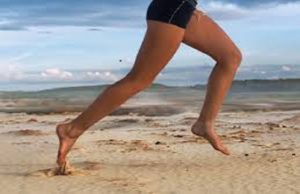 As research into common hip injuries progresses, so too does our understanding of how we manage this.
As research into common hip injuries progresses, so too does our understanding of how we manage this.
One of the biggest shifts in research on Gluteal Tendinopathy is how we manage the injury. What we thought was best practice in the past might not be the best thing for it now.
Tendinopathy of the Gluteus Medius and Gluteus Minimus muscles is a common presentation in active runners, cyclists, sedentary workers, stay at home mums, and especially menopausal women.
The problem exists when there is a change in load which causes the tendon to adapt and often change the composition of fibres within the tendon, from mostly strong collagen fibres, to an increased proteoglycan content.
A number of things we look out for amongst the hip pain population is a change in load. This can be from a number of things such as runners who transition into hills, cyclists who are doing a lot more sprint work in the saddle, sedentary workers who are sitting crossed legged, or who hinge on a hip when socialising, new mothers as they carry a baby on one side to free up an arm, and women around menopause when there is a natural weight gain and a change in oestrogen levels.
In fact because of changing hormone levels women are 3:1 more likely to have a gluteal tendinopathy than men.
As research has progressed, so too has our understanding of how to manage this type of hip pain.
When diagnosed with hip pain there are several things you should try to avoid:
– Sitting cross legged
– Hanging on your hip in standing, resting all your weight on one leg, or hip hitching as we call it
– Sleeping on the painful side without a pillow between your legs
– Stretching your hip
– Clam shell exercises in early diagnosis
– Running on a camber at the track, or on a road
– Saddle sitting – either on the bike, or in some ergonomic work chairs
– Lying on your side on the couch
Some things that may help you manage this pain include:
– Placing an egg shell underlay on your bed if you are a side sleeper, and sleeping with a pillow between your legs
– Modifying your exercise program to remove hills, or running on a camber, or high intensity hip abductor exercises
– Sitting with your legs uncrossed while at work, home or out socialising
The best line of treatment is one that helps to reduce tendon pain but also teach you how to strengthen the tendon and surrounding muscles to avoid recurring injury. The Physio’s at Bend + Mend in Sydney’s CBD are trained in how to treat hip tendon injuries so you can get back to your normal level of activity sooner. Book in today to avoid the annoying prolonged pain that I common with tendon injuries.

